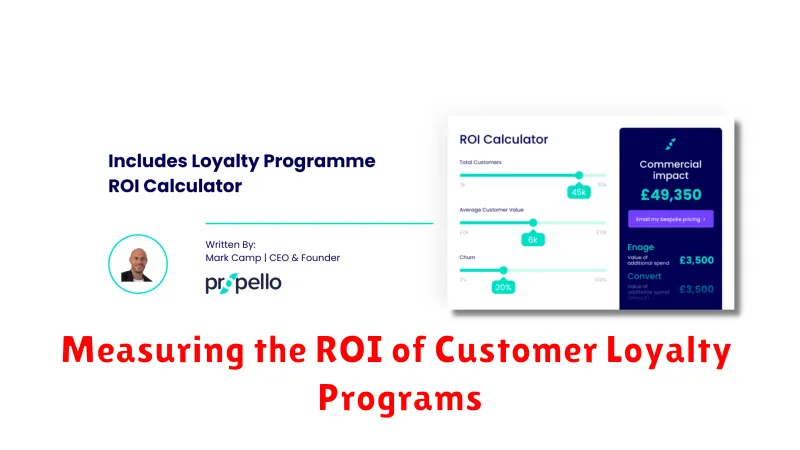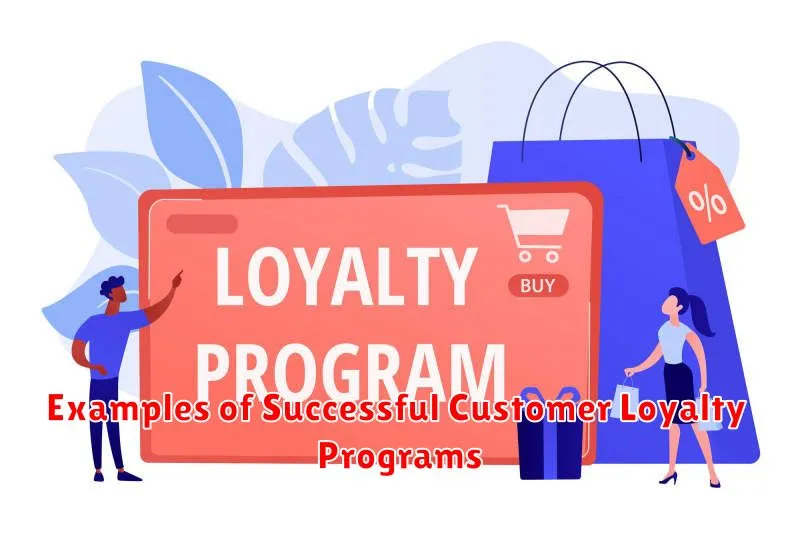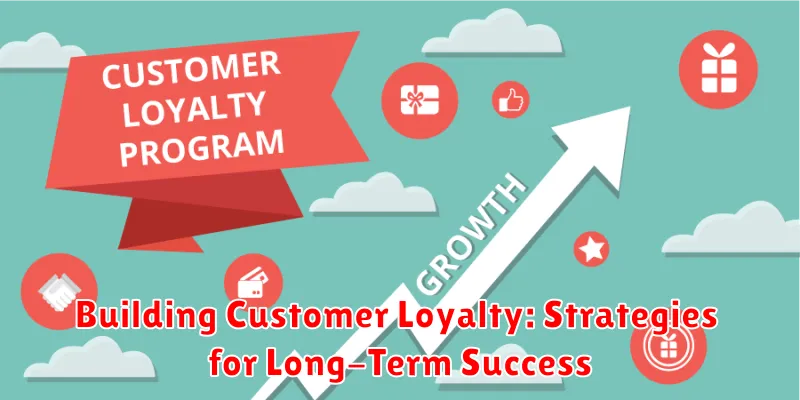In today’s competitive market, building customer loyalty is more crucial than ever for long-term success. Cultivating strong relationships with your customers is no longer a luxury but a necessity. This article explores proven strategies for building customer loyalty that will help you transform one-time buyers into dedicated brand advocates, ultimately driving sustainable growth and profitability. We’ll delve into the key elements of a successful customer loyalty program and discuss how to implement these strategies effectively within your organization. From understanding your customer base to delivering exceptional customer experiences, we’ll cover the essential steps for fostering long-term relationships and maximizing customer lifetime value.
By implementing the strategies outlined in this article, businesses can create a loyal customer base that not only generates repeat business but also acts as a powerful marketing force through positive word-of-mouth referrals. Learn how to build a customer loyalty program that truly resonates with your target audience, fostering long-term success and a sustainable competitive advantage. Discover actionable insights for enhancing customer engagement, improving customer retention, and ultimately achieving long-term business growth. Understanding the importance of customer loyalty is the first step towards creating a thriving and resilient business in today’s dynamic marketplace.
Understanding Customer Loyalty
Customer loyalty is more than repeat purchases. It’s a deeply held commitment to consistently choose one brand over competitors, even when presented with alternative options or incentives. This commitment stems from a positive customer experience and perceived value derived from the brand.
There are two primary types of loyalty: behavioral and attitudinal. Behavioral loyalty focuses on observable actions, like repeat purchases. Attitudinal loyalty, however, delves deeper, representing a customer’s positive feelings and beliefs about a brand. This emotional connection is the key to long-term sustainable growth.
Truly loyal customers become brand advocates, recommending products and services to their networks. They provide valuable feedback and are more forgiving of occasional missteps. Understanding these nuances is crucial for developing effective loyalty strategies.
The Importance of Customer Loyalty
Customer loyalty is crucial for sustained business growth and profitability. Loyal customers contribute significantly to a company’s bottom line through repeat purchases and positive word-of-mouth referrals.
Acquiring new customers is often more expensive than retaining existing ones. Loyal customers reduce marketing and sales costs, providing a higher return on investment (ROI). They also offer valuable feedback, allowing businesses to improve products and services.
A loyal customer base provides a stable foundation for revenue streams, even during economic downturns. This predictability allows for better forecasting and strategic planning. Furthermore, loyal customers are more forgiving of occasional missteps, offering businesses a degree of resilience against competitive pressures.
Building a Customer Loyalty Program
A well-structured customer loyalty program can significantly boost customer retention. Key considerations when designing a program include identifying your target audience, setting clear objectives, and choosing a suitable reward structure.
Tiered programs often work well, offering increasing benefits as customers engage more. This encourages repeat business and builds a stronger sense of loyalty over time.
Rewards can range from exclusive discounts and early access to new products, to personalized experiences and preferential customer service. The chosen rewards should align with your brand and appeal to your target audience.
Simplicity and transparency are crucial. The program mechanics should be easy to understand and the benefits clearly communicated. Complex programs can deter participation.
Creating Personalized Experiences
In today’s competitive market, creating personalized experiences is paramount to fostering customer loyalty. Customers increasingly expect businesses to understand their individual needs and preferences.
Personalization goes beyond simply addressing customers by name. It involves tailoring interactions, offers, and product recommendations based on their past behavior, purchase history, and expressed interests. By demonstrating this level of individual attention, businesses can cultivate stronger relationships with their customers.
Data analysis plays a crucial role in enabling personalized experiences. Gathering and analyzing customer data allows businesses to identify patterns and trends, enabling them to anticipate customer needs and deliver targeted offers. This data-driven approach can significantly enhance the customer journey and strengthen loyalty.
Examples of personalized experiences include customized product recommendations, exclusive discounts based on purchase history, and tailored communication addressing specific customer interests. These efforts demonstrate a commitment to understanding individual customers, fostering a sense of value and appreciation.
Providing Excellent Customer Service
Excellent customer service is a cornerstone of customer loyalty. It’s the direct interaction between a business and its customers, and it can make or break the relationship. Providing prompt, efficient, and empathetic support demonstrates that you value your customers and their business.
Key elements of excellent customer service include:
- Accessibility: Make it easy for customers to reach you through various channels (e.g., phone, email, chat).
- Responsiveness: Answer inquiries promptly and keep customers informed throughout the resolution process.
- Problem-solving: Effectively address customer issues and provide solutions that leave them satisfied.
- Empathy: Show understanding and compassion for customer frustrations and concerns.
- Proactiveness: Anticipate customer needs and address potential issues before they arise.
By consistently delivering exceptional customer service, you cultivate trust and build stronger relationships with your customers, ultimately fostering long-term loyalty.
Building a Strong Community
Community building fosters a sense of belonging and shared interest among customers. It provides a platform where they can interact with each other and the brand, creating a powerful network effect. This strengthens customer relationships and encourages repeat business.
Creating a thriving community involves several key strategies. Firstly, establish a dedicated platform, whether it’s a forum, social media group, or dedicated online space. This provides a centralized hub for interaction.
Secondly, facilitate meaningful interactions. Encourage discussions, offer exclusive content, and host events that resonate with your target audience. Active moderation ensures a positive and productive environment.
Finally, recognize and reward active members. Exclusive offers, early access to products, or simply acknowledging their contributions can significantly boost engagement and loyalty.
Leveraging Customer Feedback
Customer feedback is an invaluable resource for building loyalty. Understanding customer perspectives allows businesses to tailor their offerings and improve the overall customer experience.
Actively soliciting feedback through various channels is crucial. Surveys, feedback forms, and social media monitoring can provide valuable insights. Analyzing this data can reveal areas for improvement and highlight what the business is doing well.
Responding to feedback, both positive and negative, demonstrates that the business values customer opinions. Addressing concerns and implementing changes based on feedback builds trust and strengthens customer relationships. Publicly acknowledging feedback and demonstrating action taken can further enhance this effect.
Using Technology to Enhance Customer Loyalty
Technology offers powerful tools to cultivate lasting customer relationships. CRM systems, for instance, allow businesses to gather valuable data on individual customer preferences and purchase history. This information can be used to personalize interactions, offer targeted promotions, and anticipate customer needs.
Marketing automation platforms streamline communication by sending automated emails, personalized messages, and exclusive offers triggered by specific customer actions or milestones. This ensures consistent engagement and strengthens the customer journey.
Loyalty programs can be significantly enhanced through mobile apps. These apps provide a convenient platform for customers to track points, redeem rewards, access exclusive content, and receive personalized notifications, fostering a sense of community and rewarding continued engagement.
Data analytics play a crucial role in understanding customer behavior. Analyzing purchase patterns, website activity, and social media interactions provides insights into what customers value most. This data-driven approach allows businesses to refine their loyalty programs and optimize the customer experience.
Measuring the ROI of Customer Loyalty Programs

Measuring the return on investment (ROI) of customer loyalty programs is crucial for understanding their effectiveness and justifying continued investment. While it can be complex, focusing on key metrics provides valuable insights.
Customer Lifetime Value (CLTV) is a key metric. A successful loyalty program should increase the CLTV of members compared to non-members. Track the spending habits of both groups to quantify this difference.
Customer Retention Rate is another important measure. Loyalty programs aim to retain customers. Monitor the retention rate of program members versus non-members. A higher retention rate among members signals program success.
Program Participation Rate indicates how engaging the program is. Track the percentage of eligible customers who actively participate. Low participation may suggest the need for program adjustments.
Redemption Rate helps gauge the attractiveness of program rewards. Track how often rewards are redeemed. Low redemption rates may signal a need for more appealing rewards.
By analyzing these metrics, businesses can gain a clearer understanding of the effectiveness of their loyalty programs and make data-driven decisions for improvement and optimization.
Examples of Successful Customer Loyalty Programs

Examining successful programs provides valuable insights for building your own. Sephora’s Beauty Insider program is a prime example. It offers tiered rewards, exclusive experiences, and personalized recommendations, fostering a strong sense of community and driving repeat purchases.
Amazon Prime, while not a traditional loyalty program, demonstrates the power of value-added services. Free shipping, streaming entertainment, and other perks create a significant barrier to switching for members.
Starbucks Rewards effectively utilizes technology. The mobile app allows for easy payment, order customization, and reward tracking, creating a seamless and personalized experience. These features contribute to higher customer engagement and increased spending.

